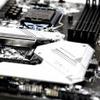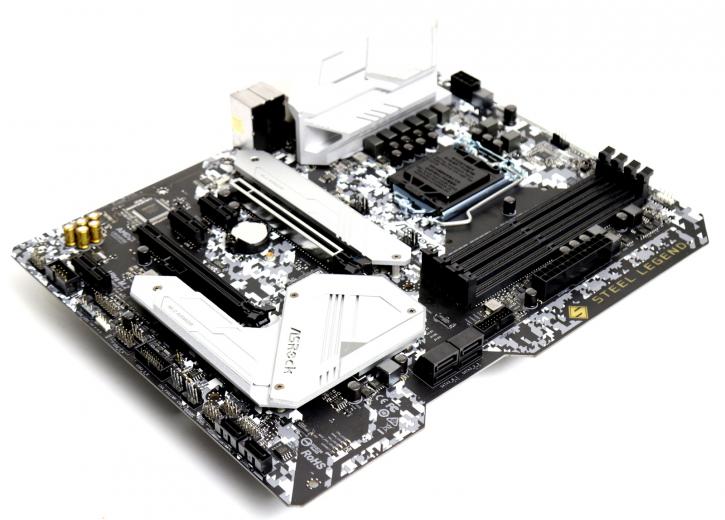Final Words & Conclusion
Conclusion
The Z390 Steel legend series will serve a specific crown, you'll need to like the light colored metal elements and of course, you'll miss out on some features like WIFI, more SATA3 slots and smaller stuff like a diagnostic LED or even power on/off buttons that are on board. This thus is a more mainstream product, and it behaves as that as well. The perf was pretty much baseline Intel spec, with some exceptions here and there. At default settings and after having tested a dozen boards, the performance all is more or less the same albeit it positioned mostly at the lower range of that spectrum, as well as the features. Nice for this motherboard are the integration of two M2 slots with an option to go WIFI on that extra exposed M2 slot. We did have higher than expected temperatures during overclocking though, in hindsight, a heat pipe cooler was not the best thing to use. One design flaw, however, is that part of the VRM area thinks like chokes are not covered tagging me this as a poor VRM design cooling wise, the thermal images show big hotspots when overclocked.
Power consumption
With this eight cores and sixteen threads proc you get a 95 Watt TDP processor. With the system at idle with a GeForce RTX 2080 Ti installed / 16 GB memory / SSD and the Z390 motherboard, I hovered at roughly 50 Watts in IDLE. That's okay, the load values are okay as well but definitely higher. When we stressed the processor 100% run we reach just over 200 Watts with this 8-core part. That's the entire system. That is on the high side alright. Then again, does anyone actually care about it when you get performance metrics like shown today?
DDR4 Memory
For Coffee Lake-S (8th and 9th Gen Intel procs) and DDR4 we always say, volume matters more than frequency. A 3,200 MHz kit, for example, is more expensive and does offer better bandwidth but the performance increase in real-world usage will be hard to find. Unless you transcode videos over the processor a lot. As always, my advice would be to go with lower clocked DDR4 memory with decent timings, but get more of it. Don't go for 8 GB, get two or four DIMMs and in total a minimum of 16 GB. The reason we test at 3200 MHz is simple, we do the same for AMD Ryzen and want to create a fair and equal playing ground for both. 3200 MHz is, however, a very nice equilibrium for both processor brands.
Performance & tweaking
Once tweaked we noticed that the eight cores like a bit of extra voltage, we expect all-core tweaks in the ~5.1 GHz marker to need 1.38~1.40 Volts on the processor. While that does increase power consumption, it wasn't something that scared me away. Some platforms will and procs will also be able to manage a lower voltage. Again, we have been using an ES sample so I cannot say anything conclusive on the final retail products (these might run a tiny bit cooler). The infrastructure that Z390 offers is easy to use, you increase the CPU voltage and multiplier and you are good to go. Another plus for the Intel platform is that over the years they have been able to refine their memory controllers, pop in anything XMP 2.0 and you have a 90% chance it'll work straight out of the box with very fast memories. Mind you that all our tests are performed at 3200 MHz DDR4, similar to Ryzen and Threadripper to remain objective and for fair play on both sides. realistically though, Ryzen is more memory frequency dependent in gaming than Intel is.
Final words
As stated, the steel legend serves a mainstream crown with its price level. That does show in a lot of elements, but overall you get everything you need for a proper gaming rig. You'll miss out on WIFI, you get ALC 1200 opposed to 1220 (audio) and you need to like the design. A miss, however, is the VRM area, part of it is not covered by a heatsink, especially when tweaking and overclocking you want that with these 8-core beasts. Overall the performance was fairly baseline, however, that's easy to tweak out. The BIOS is quite solid and looks user-friendly. While it is probably not a top pick, it certainly is a product we can recommend, however, if you plan to add some extra voltage on that processor of yours, I'd be on the lookout for something with better VRM cooling. Overall though a solid enough motherboard that will sell for roughly 169 USD/EUR.
Handy related downloads:
- Sign up to receive a notification when we publish a new article
- Or go back to Guru3D's front page



